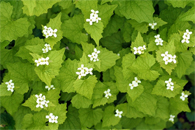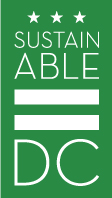 Air Quality
Air Quality
DOEE's Air Quality Division works to protect the health and welfare of the District of Columbia's citizens, millions of visitors, and natural environment by reducing the concentration of pollutants.
 Environmental Outreach and Education
Environmental Outreach and Education
DOEE educates teachers and students about the connections between their personal actions and the health of their surroundings, especially local waterways and the Chesapeake.
 Fisheries and Wildlife
Fisheries and Wildlife
A main objective of the program is to provide suitable fish habitat to increase the number and diversity of fish in the waters of the Potomac and Anacostia rivers in the District.
 Green Building
Green Building
Green building is an approach to design, construction and operations that conserves resources while it protects human health. Green buildings use less energy, consume fewer natural resources such as water and forest products, and emit fewer pollutants into the environment.
 Lead in the District
Lead in the District
Lead turns up in our yards, shows up in our homes, and ends up in our landfills. It is a powerful neurotoxin, which means exposure can damage the brain. It can also injure other soft tissues and organs, and can interfere with the formation of blood. Exposure to enough lead may even cause death.

Toxic Substances
DOEE offers a multitude of toxic substance related programs and services to its residents and businesses.
 Water in the District
Water in the District
Clean water is essential for human and animal life, for commerce and industry, and for recreation. Drinking water in the District of Columbia comes from the Potomac River, upstream of the District.
 Vegetation In the District
Vegetation In the District
The District, a fully developed, urban city, still hosts many green spaces, with a variety of vegetation types. DOEE is working to restore and improve all of these vegetated area in the District through a number of programs.
 Sustainability
Sustainability
Sustainability means meeting our economic, social, and environmental needs while ensuring that future generations will also be able to meet their own needs.

